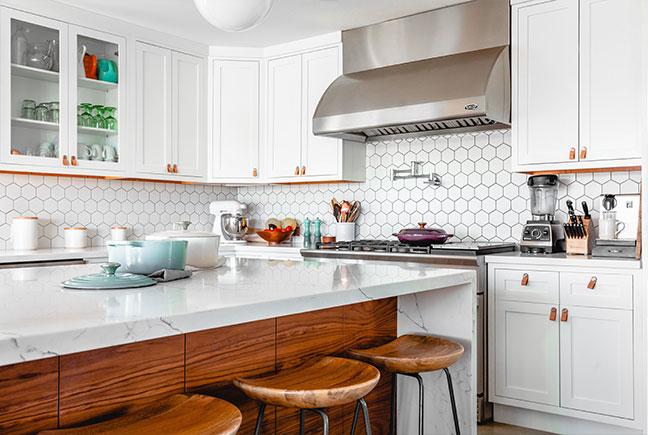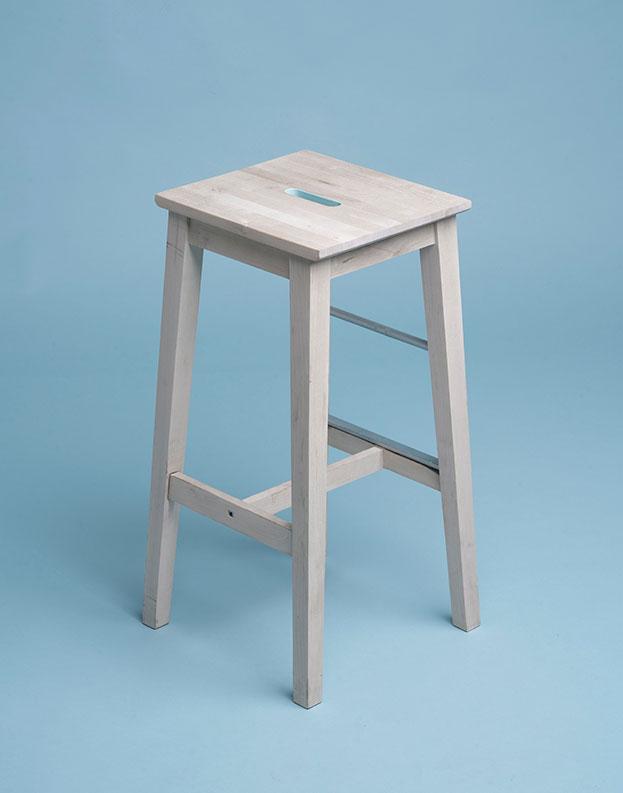Most people go too far with renovations. There will be signs of this, such as when you’re eating out a can of baked beans on a $5,000 chair, and that’s been your dinner for three nights in a row. But a good-looking home doesn’t have to come with intense periods of poverty, if you manage the renovation budget:
1. You don’t need to renovate the whole house at once
One common mistake is trying to pay to renovate your entire house, all at one go. This is how people end up paying $50,000 in a single month, and then discovering the dangers of a rice-and-soy-sauce diet.
But remember you don’t need to do it this way. It’s perfectly alright to renovate one room at a time, if doing up the whole house is out of budget. For example: if your maximum budget is $10,000, but the whole house would take $30,000, then do up just the kitchen or bathrooms first. After you’ve saved up the next $10,000, move on to the bedrooms, and then the living room, etc.
Why rush? Your house isn’t going anywhere. And this is one great way to renovate your house without ever needing a loan.
Tip: Don’t start with the living room. We all want to show off at the New Year Reunion, but life is a lot more comfortable if you start with the bathrooms and bedrooms (or kitchen if you cook).

2. As a rule of thumb, your renovations should not cost more than six times your monthly household income
If you’re earning a monthly income of $7,000 (you and your spouse together), then your total renovations shouldn’t exceed $42,000.
This is a loose rule of thumb, but it’s still better than following benchmarks like “how much cousin Sarah spent”, or how much a magazine tells you a condo / flat / landed property renovation should cost.
When you’re talking to an interior designer or contractor, keep this figure in mind when they ask for a budget. We’d suggest also subtracting about 20 per cent when giving the final budget; because the chance of a renovation not going over the agreed-upon budget are about equal to a snowball’s chance in a microwave.
So if six months of your household income is $48,000, tell the designer / contractor to work around a budget of “about $38,000”, and you should still be safe.
If you’re a landlord by the way, another rule of thumb is that renovations shouldn’t cost more than 12 months of the rental income (i.e. aim to have your renovation pay for itself before the year is out)
Need help keep tracking of renovation payments? The DBS Nav Planner comes in handy here.
3. Don’t use “under the table” contractors, even if it seems much cheaper
There’s a group of handymen / contractors out there who can help with renovations at a discount. Many of them do it as a side job, and some may even have the actual qualifications. But we’re going to suggest you don’t use them.
The main reason is that damages done during renovation (including accidental damage to your neighbour’s home) are not covered by your home content insurance. The damages are claimed from your contractor’s insurance – and many of these “unofficial” contractors don’t have said insurance.
If the renovations go wrong and flood your neighbour’s unit downstairs, it won’t just “bust” your budget, it will flat out demolish it. The cost of repairing someone’s ceiling, for instance, can run up to around $5,000; or even above $20,000 if they have an elaborate false ceiling.

So stick to the proper, registered professionals. Check for their business registration on ACRA if you’re in doubt.
4. For resale units, check if the previous works are new enough to retain
As far as possible, avoid replacing major items during renovation, such as a shower closet / bath tub, or stoves and kitchen islands.
There isn’t really a market to resell these in Singapore (how often do you find used bath tubs on Carousell?) so they’ll just get thrown away. You can end up paying $1,000 to $1,500 just to hack them out and dispose of them, on top of the price of replacements.
It’ a good idea to check with the previous owner (or the seller’s agent) on which parts of the existing house are new. If the bathroom was just renovated three years ago, for instance, it’s new enough that you can use it for decades to come.
There’s always a temptation to rip it all out and “make it yours”, but that’s frankly wasteful; especially if the existing works are quite new.

5. If you must use a loan, use a reno loan first; and remember the 40 per cent rule
If you’re going to use credit, don’t start with a personal loan. A renovation loan (reno loan) tends to be cheaper, with interest rates between 3-5% per annum.
In almost every bank in Singapore, reno loans are capped at $30,000, or six months of your income. You should only resort to a personal loan to cover anything in excess of this amount.
Also, try to ensure that your total monthly debt repayments – inclusive of the new reno loan – is under 40% of your monthly household income.
Don’t trade your future children’s university fees for a walk-in wardrobe, okay?
6. On a super tight budget or renting out? Save on furnishings by buying over the previous owner’s stuff
Furnishings can cost almost as much as renovations, and many home owners consider the two to be intertwined when budgeting.
If you’re on a tight budget – or you’re renting out the unit to someone else – here’s one way to save on furnishings: ask the previous owner if they want to sell the existing furnishings for cheap.

Some sellers are happy to do this, as they want new furnishings for the home they’re moving to (and you’d save them the moving and disposal costs).
This can give you a ready-furnished apartment, that you can rent out as soon as renovation works are complete.
Or if you’re on a tight budget, you can pay for renovations first, and slowly replace the furnishings with your own over time.
Budget-wise, note that new units tend to be cheaper to renovate
If you’re undecided between a new and resale unit, perhaps the renovation costs can help you decide. In general, new homes are friendlier on the budget.
That’s because you don’t need to hack up the previous owners’ floors and tiles, or tear down their partitions. Also, because the units are newer, there are less likely to be problems with the kitchen stove, toilet sinks, air-conditioning, etc.
For young couples who are already burdened with the costs of a wedding and mortgage, a new unit can mean significant savings.
